|
WWII Japanese Army 6 x military binoculars with reticule/grid |
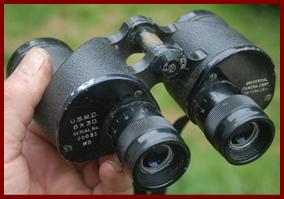

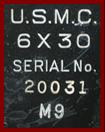
|
It is my understanding that the Universal Camera Corporation made 30,244 M9 binoculars under contract to the US Army and the US Marine Corps in 1942 and early 1943, after which production shifted to Bausch & Lomb. My example is late production, probably 1943, as it is not dated as most 1942 models were, does not have the W.P.B. (War Production Board) marking that most 1942 M9 binoculars had, and also judging by observed serial numbers of 1942 marked M9 binoculars. These have a left ocular ranging grid (the M9 pattern binoculars that Universal Camera Corp made under UK contracts had a different right ocular ranging grid). |
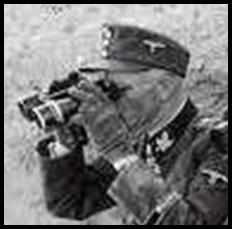
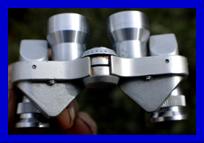

|
Japanese External Reverse Porro Prism Binoculars. WEBSITE MUSEUM |
|
OTHER BINOCULARS #12 & OPTICAL SIGHTS (MOSTLY MILITARY) |
|
FOR GERMAN WWII BINOCULAR and OPTICAL MANUFACTURER CODES |

|
WWI Ross London Stereo Prism binocular 6x private officer purchase British 8x military binoculars marked to Lt. A. J. Gowans of the 10th Border Regiment |
|
I like binoculars with a documented history of who, when, and how they fit into the human experience. My Ross 6x binoculars were a private purchase of 2nd Lieutenant A. J.Gowans of the 10th (reserve) battalion Border Regiment in WWI, which had been formed in 1914 in Southend England. A.J. Gowans joined as a second lieutenant through the University of Glasgow (Scotland) OTC (Officer Training Corps). British officers in 1914 often or normally purchased their own binoculars from approved patterns through suppliers that specialized in equipping officers. |
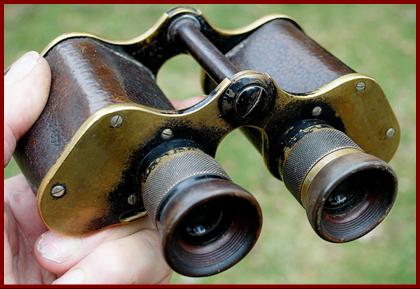




|
WWII Toko / Tokyo Kogaku Kikai Kabushikikaisha (Tokyo Optical Co., Ltd.) Japanese Navy 7x7.1 military binoculars with ranging grid. |
|
My WWII era Toko Japanese senior officers binoculars with original canvas case and with right ocular graticule/ ranging grid were made by Tokyo Kogaku Kikai Kabushikikaisha, founded in 1932, a company founded to make various Japanese army optical goods, and who is today known as Topcon. |
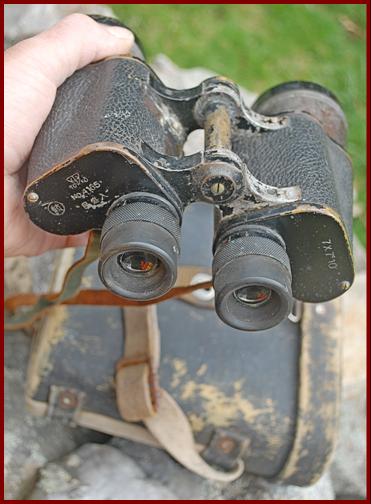
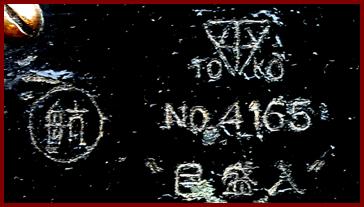

|
The marking 航 means “navigation”and was used on Japanese navy and naval aviation binoculars. The marking ' 目盛入 means “with scale” (graticule or ranging grid). |
|
WWII Nikko Novar / Nippon Kōgaku Kōgyō Kabushikigaisha ( 日本光学工業株式会社 Japanese Army 7x50 military binoculars |
|
My WWII era Nikko Japanese senior officers 7x50 binoculars with right ocular graticule/ ranging grid were made by Nippon Kōgaku Kōgyō Kabushikigaisha ( 日本光学工業株式会社 " Japan Optical Industries Co., Ltd.") , today known as Nikon. |
|
The marking 日本光学 means “Nippon Kogaku”. The marking 目盛入 means “with scale” (graticule or ranging grid), and the marking 丿 バ一 is the Kanji phonetic equivalent of “Novar” |
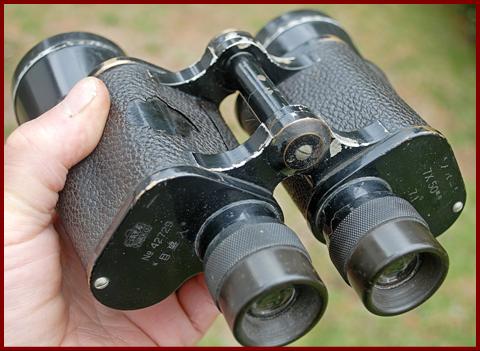
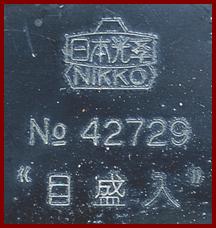
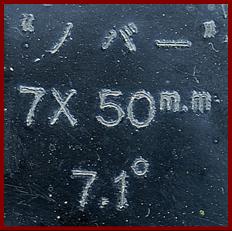
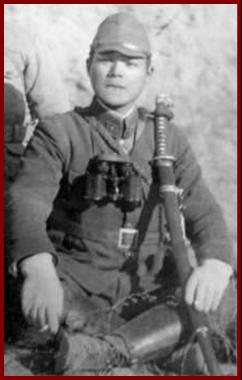
|
WWII Nikko/ Nippon Kōgaku Kōgyō Kabushikigaisha ( 日本光学工業株式会社 Japanese Army NCO/ Non Commissioned officers 93 式双眼鏡 / 93-Shiki sōgankyō) Type 93 4x10 military binoculars |
|
In the same way that the German military developed the 08 fernglas in WWI as a durable economic simple to make Galilean/ non prismatic binoculars to be issued to non commissioned officers in WWI, the Japanese also developed the Type 93 (93 式双眼鏡 / 93-Shiki sōgankyō) Galilean/ non prismatic binoculars to be issued to non commissioned officers during their 1930’s Manchurian conflict. It has a right side ranging grid. As with the Nikko binoculars above, by the logo outline, my example with it’s canvas carry case was made Nippon Kōgaku Kōgyō Kabushikigaisha as Nikko ( 日本光学工業株式会社 " Japan Optical Industries Co., Ltd.") binoculars, (the company is today known as Nikon). The serial number has been scratched out. |
|
The J.E.S. mark Japan Engineering Standards #13554 |

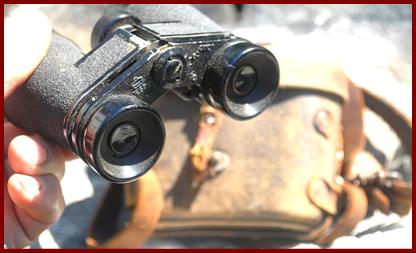
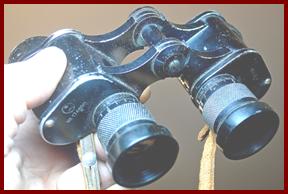
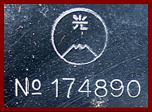
|
My Japanese 6x binoculars are Japanese army issued and have a right ocular reticule or ranging grid. These would be very typical of a US soldier bring back item, and virtually all Japanese binoculars in working condition that were encountered by US troops during the war with Japan or occupation were grabbed to use and to bring homeo the USA. I have so far been unable to identify the logo, which the Google translation ap interprets as being a character for “rice”, over a representation of Mt Fuji ???? |

|
Early 1930’s Huet Aerix 16x50 MG (Ministre de Guerre) French Army military binoculars with unusually early production serial number of # 16. |
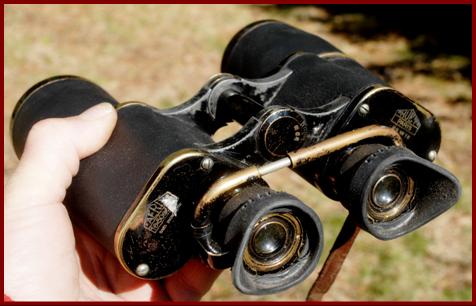
|
My Huet Aerix 16x50 binoculars were made by the Societ é Generale d’Optique, as marked in the case, and both binoculars and case are “ MG ” military property marked (Ministerie de Guerre). They have an unusually low serial number of 16, of a model of military binoculars not frequently encountered, and probably were not produced in particularly large quantity. The low serial number (217) of another known example held by the on line binoculars museum fernglasmuseum.at is also suggestive of low overall production quantities. (speculative). These binoculars feature an unusual elaborate telescoping friction rod bridge system, to fix the inter ocular distance in a more positive way than pivot friction (which works less well on big and heavy binoculars like these), while allowing quicker adjustment than using a threaded rod and lock wheel. This is presumably partly because with the high 16x power eye placement has to be unusually exact for a clear view by both eyes, and a person would not want to fiddle to get it set with every use. But it is also probably related to indexing the profiled eyeshades. The case is wide enough to not have to fold the binoculars to fit. No graticule/ range grid and so marked. |
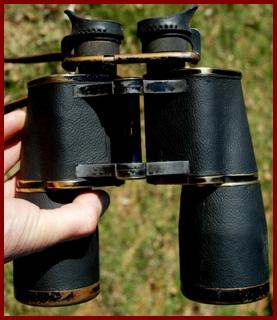
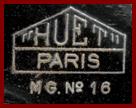
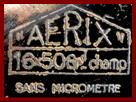
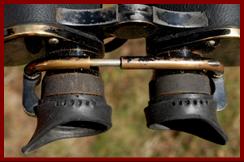
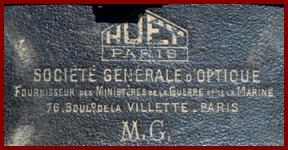
|
WWII Made in Occupied France Huet 8x30 Krieigsmarine German Navy military binoculars |
|
WWII German Occupied France Made Huet Dienstglas 7x50 German Army military binoculars |
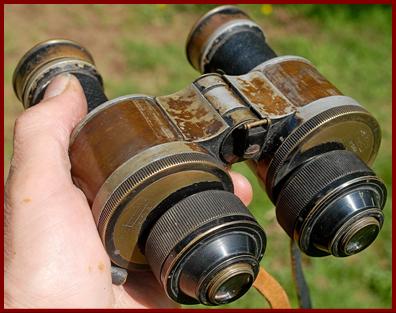

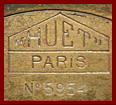
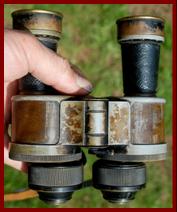
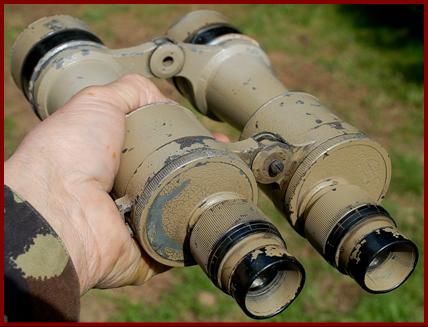
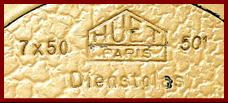
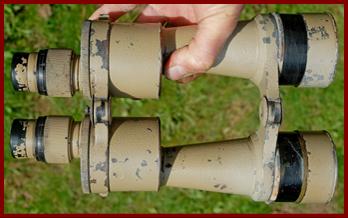
|
The French Societ é Generale d’Optique, maker of Huet optical goods, made my DF 8x30 Artillery binoculars serial number 5854 for the Kriegsmarine/ German Navy. |
|
Huet production of their existing French military optics designs such were continued for the German military during the German occupation of France June 1940-1944, with some German markings, as with mine. Captured existing Huet optics were also used by the German military, but these usually only had their original French markings. These binoculars have a right ocular graticule/ grid. |
|
The French Societ é Generale d’Optique, maker of Huet optical goods, made my 7x50 501 Dienstglas marked binoculars with right ocular graticule/ ranging grid for the German Army during the German occupation of France. |
|
I do not see any serial number (unless it is the 501 marking), and based on the common late war tan paint (nothing to do with DAK despite nonsense internet claims of tan binoculars being DAK). I believe these to be late war production. |
|
These have sliding objective sun guards |
|
WWII Japanese Army 6X military binoculars |
|
WWI era French Made Huet Paris Stadex 8x30 A.B. / Arm é es Belges/ Belgian Army Military Binoculars |
|
WWII U.S. Army M17 7x50 military binoculars with left ocular reticule. |
|
During WWII a large succession of binoculars models were produced for the U.S. Army including modifications and/or improvements. According to Bob Womack, 54,412 of my US Army M17 model binoculars were produced by Westinghouse using Bausch & Lomb and Optical Research Co. produced lenses, with this model being similar to the M15 model but with a left ocular reticule/ ranging grid. There was also a separate M17A1. my M17 7x50 binoculars are quite heavy at over 3 pounds and are quite large at nearly 8 inches by 8 inches, and were obtained in a leather 24 carrying case. |


|
1944 WWII U.S. Army M16 7x50 military binoculars by Nash Kevinator Stock #7578343 |
|
1943 WWII Nash Kelvinator U.S. Army M3 6x30 military binoculars with HMR marking |
|
WWII U.S. Army M5 6x30 military binoculars |
|
FOR OUR U.S. M5 BINOCULARS SEE OTHER BINOCULARS #9 (Australian Issued US Wollensak M5 binoculars) |
|
1942 WWII U.S. Army M6 6x30 Universal Camera Corporaion military binoculars |
|
ca 1943 WWII U.S.M.C. / U.S. Marine Corps M9 military binoculars made by Universal Camera Corp. |
|
WWII 1944 Nash Kelvinator U.S. Army M13 6x30 military binoculars |
|
WWII U.S. Army M15 7x50 military binoculars serial #18584 (No Reticule) Stock #7678143 |
|
U.S. Army Military L3 Contract 7x28 M-24 Military Binoculars |
|
FOR OUR U.S. M24BINOCULARS SEE OTHER BINOCULARS #7 |
|
FOR OUR other U.S. M9 BINOCULARS reused by the U.S. Govt. ATTD SEE OTHER BINOCULARS #7 |
|
U.S. Army Military Contract Fujuinon 7x50 M-22 Military Binoculars NSN 1240-01-361-1318 |
|
FOR OUR U.S. M22 BINOCULARS SEE OTHER BINOCULARS #3 |
|
FOR OUR U.S. 1944 Nash Kelvinaor M16 BINOCULARS SEE OTHER BINOCULARS #2 |
|
People seeking WWII Japanese military binoculars should be careful. Many binoculars claimed as WWII Japanese military on places like Ebay ® are neither. Binoculars marked “Japan”, “made in Japan”, “occupied Japan” etc. are for export and are NOT WWII because Japan did not export binoculars during WWII. A few logotypes of Japanese companies exporting binoculars prior to WWII such as Nippon Kogaku using Nikko, Toko, Takatisho continued to use these established logos with non Japanese alphabet for WWII military optics. But model names etc. will usually be in Japanese characters, because most Japanese prior to and during WWII could not read non Japanese alphabets! Markings other than those few logos using non Japanese alphabet usually suggest NOT WII, but with a few exceptions, partly because export model names were not easy to put in Japanese characters. Arabic numerals were commonly used interchangeably with Japanese character numbers on military equipment, perhaps partly because the spoken sound of the Japanese character 4 sounds like shi (death) and the spoken sound of the character 8 sounds like ku (suffering, agony), both considered unlucky. Canvas binoculars cases are usually WWII military, but were also produced for some early post war occupied Japan binoculars. Reticule/ range grid does indicate military use. |
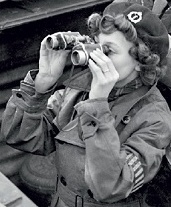
|
NIKKO logo |
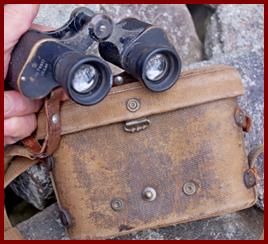
|
My Japanese 6x binoculars are Japanese army issued and have a right ocular reticule or ranging grid. These would be very typical of a US soldier bring back item, and virtually all Japanese binoculars in working condition that were encountered by US troops during the war with Japan or occupation were grabbed to use and to bring home o the USA. I have so far been unable to identify the brand logo. I welcome help: www.miniaturebinoculars.com. |

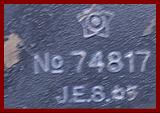
|
The J.E.S. mark is Japan Engineering Standards #13554 |
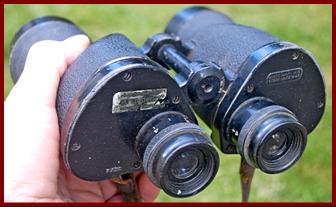


|
My US Army M15 7x50 binoculars have no reticule and have a decal stating that they have coated optics. |
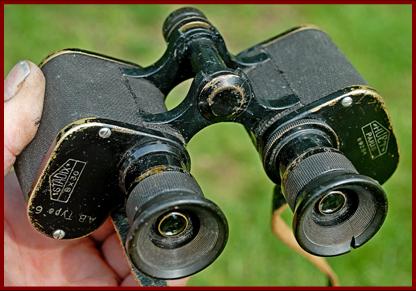


|
The French Societ é Generale d’Optique, maker of Huet optical goods, made my Huet Paris Stadix 8x30 military binoculars serial number 69281 for the A.B. / Arm é es Belges/ Belgian Army as the Type 6 in the WWI period. They have an unusual ring to adjust the right ocular graticule/ ranging grid to any horizontal or vertical position. |
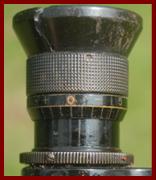

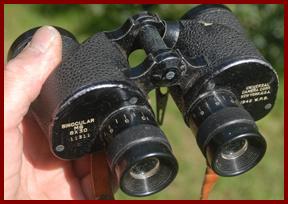


|
My Universal Camera Corporation M6 6x30 binoculars were made in 1942 under the auspices of the W.P.B ./ War Production Board, the U.S. Government agency created in January 1942 to coordinate the U.S. WWII military mobilization. The Universal Camera Corporation (1932-1964) was one of many U.S. companies directed to convert to war production during WWII. |
|
WWII Japanese Takatiho Optical Co. Ltd 7x50 military binoculars ser. #3063 |
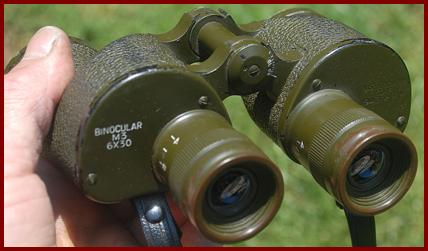


|
My Nash Kelvinator Corporation M3 6x30 binoculars were made in 1943, and it is my understanding that Nash Kelvinator and Westinghouse made 311,263 M3 binoculars between 1942-1944, with their production lines having been transitioned from their civilian production of autos and refrigerators under the tutelage of optical firm Bausch & Lomb. Given that other letters on US military binoculars FJA was Frank J. Atwood and RLB was Roy L Bowin (military officers in charge of inspection teams /QC/ specification compliance it) is likely that HMR is also. |
|
My Nash Kelvinator Corporation M13 6x30 binoculars were made in 1944, and it is my understanding that Nash Kelvinator and Universal Camera made 43,378 M13 binoculars between 1943-1944, and that these were M3 binoculars with improved waterproofing and cement . |

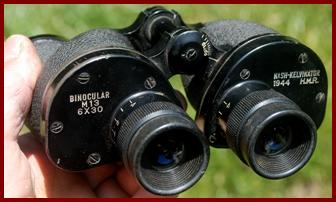
|
1942-1943 WWII U.S. Army M8 6x30 military binoculars made by Bausch & Lomb |
|
It is my understanding that the Bausch & Lomb Corporation of Rochester NY made 18,617 6x30 M8 binoculars under contract to the US Army during 1942-1943, including mine, which has a right ocular graticule/ ranging grid. R.L.B. was Roy L Bowin, who was the officer in charge of the QC/ inspection program and teams for these model of binoculars. Quality control was a concern and a problem with the rapid expansion of production and producers of US WWII military optical goods. |
|
The green paint indicates a post war military rework |
|
US Army M-19 7x50 Military Binoculars with Graticule/ Ranging Grid |
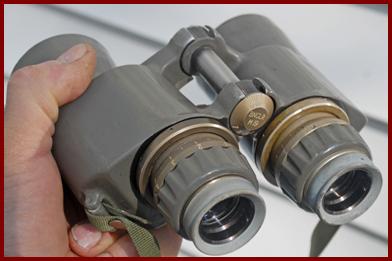
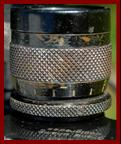
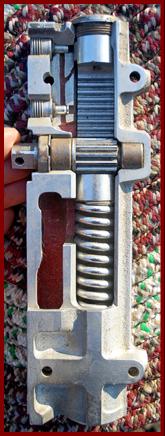
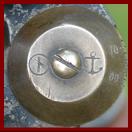

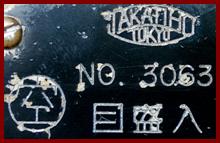
|
My WWII Takatihu 7x50 binoculars Serial #3063 were made by Takatiho Optical Co.Ltd. , and are marked on the left side 目盛入 ( with scale/ reticule/ range grid) and I believe they have a 空 in circle marking indicating Army or Air Force use. The pivot has ト in a circle, and an anchor mark, which may be an inspection/approval mark? I am unable to identify the Japanese markings above the 7x50 mm markings or on the carry case (translation help please to miniature.binoculars@ gmail.com.). Hand held Takatiho military binoculars do not seem common, and the 3063 serial number seems low. |



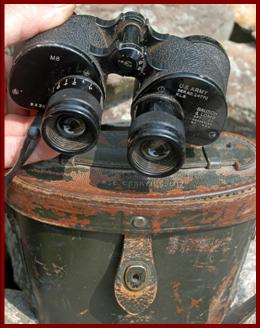
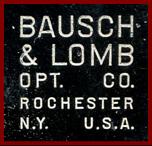

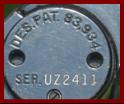


|
The US Army M19 binoculars design was developed in 1955, with left side graticule, ranging grid, and produced ca 1975-1980’s. These binoculars were designed to be field serviceable by replacing pre-adjusted modules, as shown by the ring attached ocular assembly. |
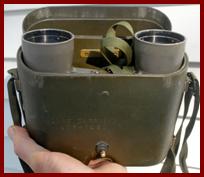
|
My understanding is that various optical components of the M19 binoculars were made in Japan, but “assembled” in the USA. |


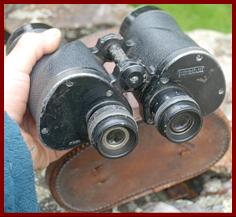
|
French Made Huet Paris Indix 6x24 decigrades M.G. (Ministre de Guerre) French Army binoculars |
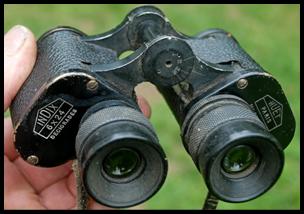

|
The French Societ é Generale d’Optique, maker of Huet optical goods, made my Huet Paris Index 6x24 military binoculars serial number 46315 for the French Army. They are “ MG ” military property marked (Ministeries de Guerre).They have an unusual ring to adjust the right ocular graticule/ ranging grid to any horizontal or vertical position. |
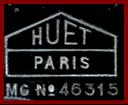
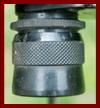
|
WWI French Made Flammarion 8x Canadian Army Property Marked Military Binoculars |
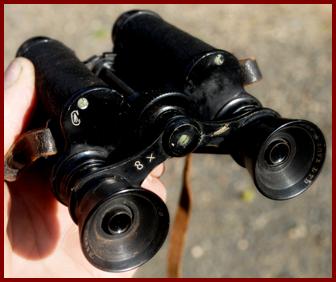

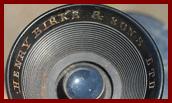


|
My Flammarion 8x binoculars were made by the French Societ é Generale d’Optique, also know as maker of Huet optical goods They are marked as imported to Canada by Canadian retailer Henry Birks & Sons Ltd., with their case marked to UK binoculars maker E.R. Watson which also had offices in Ottawa & Winnipeg Canada at the time. Both binoculars and case are marked as Canadian Army property (broad arrow in C). |
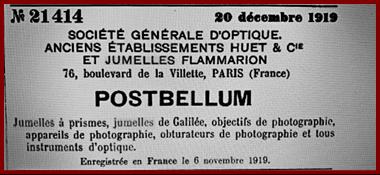
|
Flammarion was branded after noted turn of the century french astrologer Camille Flammarion (1842-1925) who licensed his name to various product branding. |